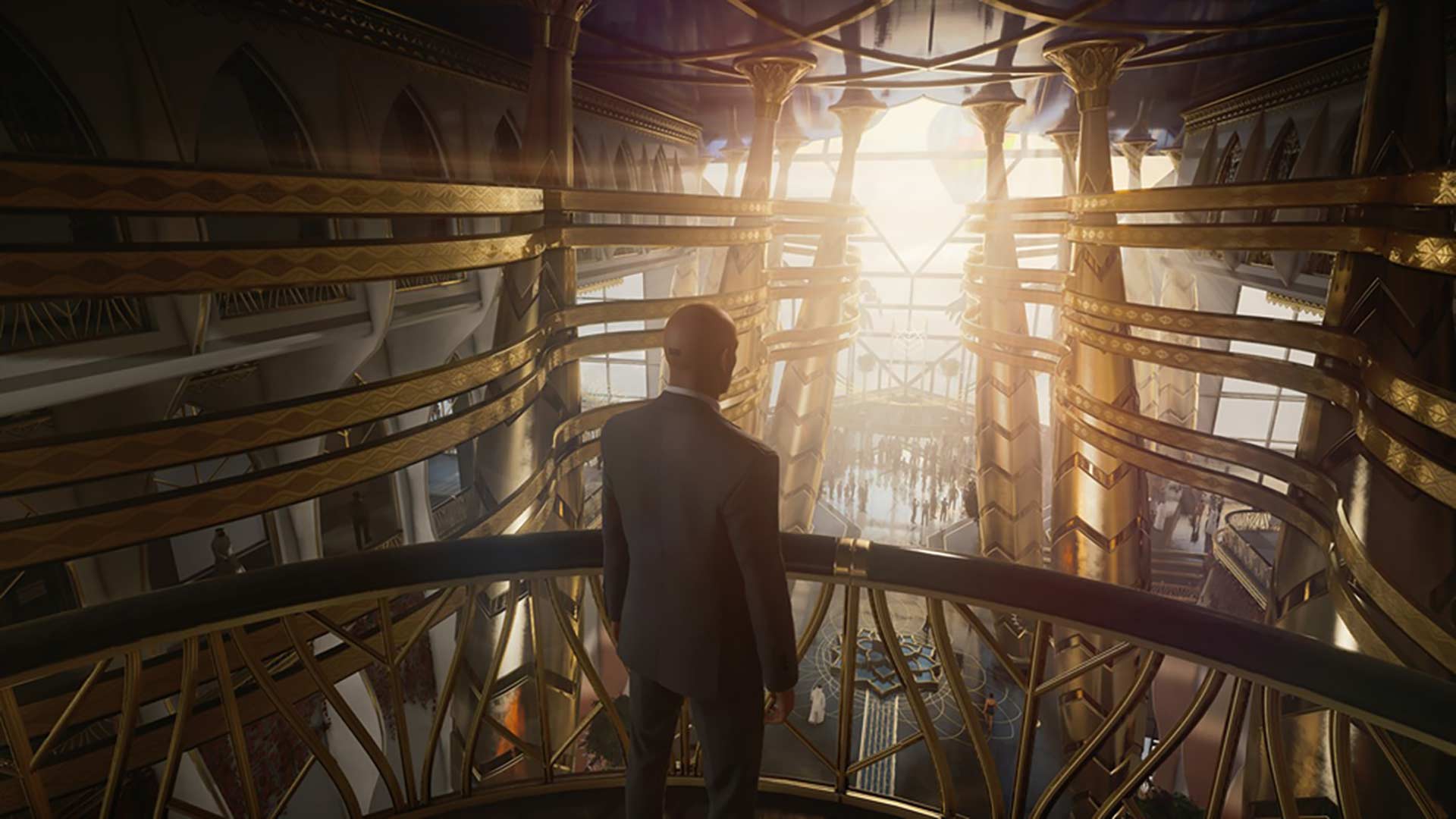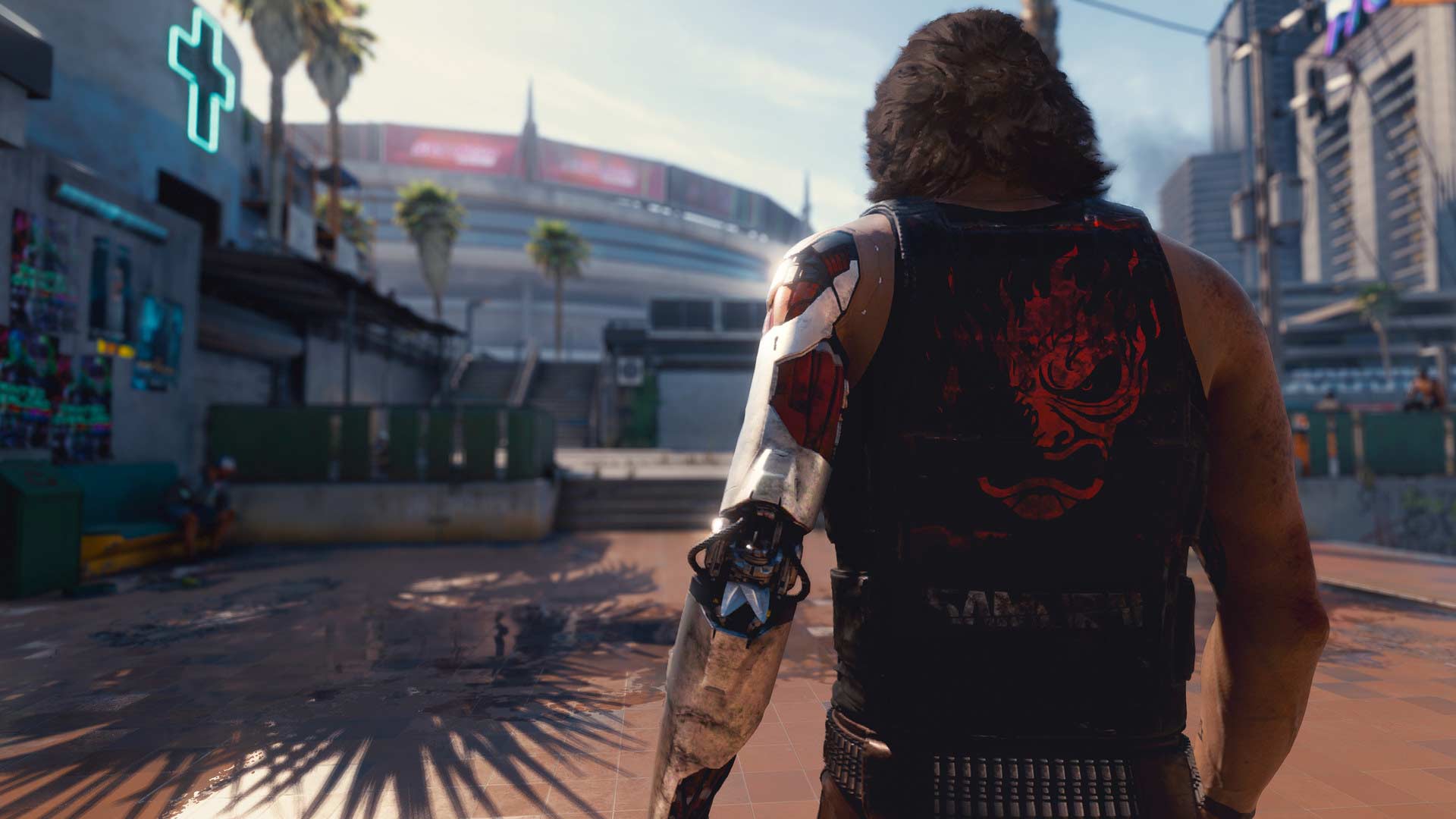
Exactly one year ago today, Google launched Stadia, its ambitious streaming service which it envisions as the “future of gaming.”
Since then, though, Stadia’s been on a bit of a bumpy road. On the one hand, the streaming technology works impressively well and supports a solid amount of devices, including Android (and, soon, iOS), TVs (via Chromecast Ultra) and Chrome browsers. The ability to avoid lengthy downloads and updates by playing games through the cloud has also proven to be a strong selling point.
“There wasn’t a ‘Stadia’ before Stadia”
Conversely, the overall service has been heavily criticized for its lack of games, features and pricing options. Further, while Google hasn’t revealed specific player numbers for Stadia, low player counts from earlier in 2020 have painted a grim picture.
With all of that in mind, MobileSyrup recently spoke with Jack Buser, Stadia’s director of games, to look back on the service’s successes and failures in the first year. At the same time, Buser provided some hints as to what gamers can expect from Stadia in the future.
Question: It’s now been a full year since Stadia launched. What are your honest thoughts on ‘Year 1?’ What are you most proud of achieving and what do you think could have been done better?
Buser: I’ve been in the games business for over 20 years now and I’ve been very fortunate to work on a number of platforms. But this has been the first time that I’ve had the opportunity to actually be a part of a brand-new platform that’s been built from scratch. There wasn’t a ‘Stadia’ before Stadia. The original Xbox was the last time that an entirely new game platform of scale has been introduced, so to be a part of the next big one has been the opportunity of a lifetime. It’s something I’m incredibly proud of.
There’s a phrase in Japanese: ‘ippo zutsu.’ It means ‘step by step.’ We knew on day one a year ago that this was really our first step towards achieving this vision for games that we had. And we knew that there were going to be many more steps ahead of that first step. Looking back at the year? Not every step has been perfect. That’s part of what makes being on a journey like this so exciting; you’re blazing new trails into uncharted territory.
“As a new entrant into this industry, it’s tough. Every new entrant in the games industry has experienced this. You have to prove yourself.”
We really have come a long way. All this work is paying off. We hear it from our gamers as well. We’re in the Reddit forums all the time. I would encourage you to go into the Stadia subreddit — it’s arguably one of the best communities in games. The amount that they appreciate our work and really see how hard we’re pushing this platform forward — it’s just so gratifying.
Q: You mentioned positive reception, but there does seem to be a lot of negative buzz towards Stadia. The platform has come under fire for a slow rollout of features and a general lack of games and communication, among other gripes. What’s your response to those criticisms? What would you say to someone who’s skeptical of Stadia?
Buser: So I’ll start by saying: ‘try it.’ It doesn’t cost you anything. Stadia.com is the URL, you’ll see a button you can click that will give you 30 games [through a one-month Stadia Pro trial] and you can try it for yourself. And if you like it, stick around. If you don’t, no harm, no foul. You haven’t spent a dime — you maybe spent a few moments playing a video game at worst, right? That’s a pretty powerful message for folks who are down on Stadia, for whatever reason, to just try it out. And what we find, by and large, is that when people do come in to check it out, they tend to stick around.
And taking it to a personal level — again, I’ve been in the games industry for over two decades and I’ve been playing games my entire life. As a new entrant into this industry, it’s tough. Every new entrant in the games industry has experienced this. You have to prove yourself. You have to really show that you are for gamers and that you’re going to deliver what you said you’re going to deliver and continue to build and win their affection. And that’s what we’ve been doing over the last year. Is it easy? No. That’s why there hasn’t been any new major players entering into the games industry for so long, because it’s really hard [laughs].
“From a gamer perspective, folks are at home, so we’ve seen a lot of growth in the platform in the last year”
And even though a year feels like a long time, we’re just getting started. We’re in this for the long haul. Part of being in business development is that games take a long time to build, so I get to know what’s going to happen with Stadia three years from now, four years now. And to think about that long-term vision and how exciting that is — this is going to be the adventure of a lifetime.
Q: Of course, a big part of Year 1 included something completely out of your hands: the COVID-19 pandemic. With that in mind, how has COVID affected Stadia — both in terms of a negative impact with delays but also perhaps in seeing more players come in?
Buser: Obviously, a number of developers are wrestling with the challenges of COVID. Where many developers worked in large studios sitting next to each other, they’re now distributed and working from home, and that presents unique challenges for development. However, Stadia actually brings something to the table in terms of development that’s great and unique. It’s actually kind of perfect for remote development because you can share builds seamlessly. It’s all cloud-based, so you don’t have this giant mini-fridge dev kit in your office.
So a number of large developers — and some of them have made public statements [like Destiny 2 developer Bungie] — have come to us to say ‘thank you, Stadia, without your development tools, we would not have been able to ship our large AAA game this year. Because we were also working on a Stadia SKU, we just shifted over to Stadia as our primary SKU, and it allowed us to resume development seamlessly, without needing to be in the office.’ That’s been incredible to watch.
From a gamer perspective, folks are at home, so we’ve seen a lot of growth in the platform in the last year. The entire games industry is up from that perspective. But I’d say that one consumer-facing moment that really meant a lot to us was when we launched the Stadia free trial, which is, effectively, the ability to go onto the [Stadia] website and click a button and get a month of Pro for free to watch a game to try. We actually worked really hard to get that moment out as fast as possible, because we knew folks were stuck at home. And we knew there were a lot of folks that maybe didn’t have a game console, or didn’t have a lot to do a lot to play, or maybe they didn’t have any games.
Q: On the subject of gamers, there are posts about ‘Dadias’ in the Stadia subreddit. Essentially, it’s the idea that there are older or middle-aged gentleman — dads, if you will — being drawn to Stadia. Are you seeing a lot of ‘Dadias’ on Stadia? What other types of demographics are you seeing taking to Stadia?
Buser: We’re in 14 countries, so it really depends on the region that you’re talking about. But there are a lot of folks out there that used to play games quite a bit and have lapsed. They’ve have jobs, they have families, and they just don’t have the time to play games the way they used to. I certainly don’t have time for a nine-hour download. Maybe they can’t justify the budget of buying a $500 game console. Many of them can’t necessarily justify buying lots of $60 games [$80 in Canada]. For those folks, Stadia is perfect. You don’t have to pay any money — you get 30 games for free right away. And if I pay my subscription fee, $10 bucks a month [$11.99 in Canada], you’re going to give me the option to keep them as long as I’m subscribed. It’s an incredible offer for that particular demographic.
“So many other companies are really validating this way of reaching consumers with incredible gameplay experiences”
But there are plenty of folks that are much younger on the platform as well. There are folks of all races and genders on the platform. It’s really a diverse crowd. So we actually look at our crowd — rather than just pure demographics — a bit more in terms of psychographics. What’s your state of mind? What’s your sort of need from a game platform? And that can span demographics. You can have people that are totally different from a demographic standpoint actually have the same need.
And two things that really popped up from our user base. One is convenience. Think of all the different types of people you know that really value convenience and entertainment — Stadia really speaks to them. Because you can play them on a screen you already own. If I get kicked out of the living room and have to play downstairs — no problem! I can pick up where I left off. Not that I ever play a video game at work, but I can on my work laptop or tablet. That convenience really resonates with our user base.
And value really resonates with our audience. We see the Reddit threads all the time: ‘I cannot believe this is the first time I’ve ever gotten this number of games, literally for free. I have not spent a dime on hardware. I’m on my free month of Stadia Pro and I’ve got all these games. What a tremendous value.’ You see people like, ‘there are 100 games in the catalogue, but I’ve been around since day one, and I have more than half of them as part of my subscription fee.’
Q: We’ve seen a lot of game subscription services — many of them with streaming components — spring up, like PlayStation Now, Xbox Game Pass and Amazon’s upcoming Luna. Given that, what is Stadia doing to be competitive? Are you concerned that the ‘subscription fatigue’ people talk about with services like Netflix and Disney+ might affect Stadia?
Buser: What we’re seeing is change. You saw us come out as the first major new platform in a very long time, a year ago. And while streaming has been around for some time with companies like GaiKai and OnLive and PlayStation Now, this was sort of the first big stake in the ground. At GDC [Game Developers Conference], we showed the vision for what we want to accomplish long-term on the platform. And it opened up a lot of eyes.
As we see other streaming platforms come to market, it’s gratifying. It’s actually exciting. Because if we were the only people that saw the opportunity, we’d be thinking to ourselves, ‘okay, wait’ [laughs]. So many other companies are really validating this way of reaching consumers with incredible gameplay experiences. A rising tide lifts all boats. And we are energized and enthused by how many folks have seen this opportunity to go ‘yeah, we want in on this too.’
Q: In the past year, Google has founded two first-party Stadia studios: one in Montreal, and the other in Playa Vista, California. You’ve also acquired Montreal-based Typhoon Studios. While you likely can’t speak to specific games, can you provide any update on how development has been going at these studios? What sorts of unique, Stadia-exclusive experiences can we expect from them?
Buser: [We’ve hit] 15 exclusives. We have not only the internal studios, but we’ve also announced partnerships with Harmonix [Rock Band], Supermassive [Until Dawn] and Uppercut [City of Brass]. So you’re going to see the amount of exclusive content on our platform scale pretty rapidly. We’ve got some incredible stuff in development. I see not just the stuff launching next year, but two years from now. You’re going to see a particular aspect of our vision become increasingly more true.
And it’s going to be our internal Stadia Games and Entertainment studios that are really going to push the boundaries of what kinds of gameplay experiences can be developed now that you have a platform that is entirely in the cloud. How can we push the boundaries of interactive entertainment and video games? Now that we are free from the limitations of a network appliance in your living room, like a PC or a game console? Now, you’re building a game for a platform that is entirely in a massively powerful data centre, and a platform that is deeply integrated with YouTube. What does that mean?
You may have seen the news around our exclusive Orcs Must Die! 3, where they have Stream Connect. Not the first game to have Stream Connect, but it really speaks to how our exclusive games from Stadia Games and Entertainment are going to take advantage of what our platform can uniquely do. Stream Connect allows us, in the context of a multiplayer game, to actually see each other’s screen, almost like picture-in-picture. It’s just an entirely new way to engage with multiplayer games.
And that’s just scratching the surface of what’s possible as we deploy more of these games. So expect that in our future. It really will allow us to achieve what we like to call ‘cloud native’ games. These are games that are being built for the cloud — first, foremost, and always — and are able, therefore, to do things that no PC or game console could ever do, no matter how powerful. That is coming.
Q: Jade Raymond [head of Stadia Games and Entertainment] gave an interview last year where she talked about Stadia leveraging Google’s other platforms to create unique experiences.
She floated the possibility of a YouTube documentary with playable sections via Stadia or Duplex AI tech generating more realistic non-player character dialogue. Speaking generally, when might we start to see those sorts of use cases, and in what form?
Buser: You actually saw some examples on day one. You might have noticed in Grid, they were able to put more cars on the road than they could on consoles. Why do you think that is? Because the game is running in a data centre. You saw Football Manager running simulations much faster than it can on a powerful PC. Because it’s running on a data centre. Take some of the more recent examples. Take things like Crowd Choice, where a streamer can be playing a game like Dead by Daylight and they can offer the people watching them [the ability to] play the game on YouTube to help make a choice in the game.
With Click to Play, they can just jump in and join the game with a streamer — we showed that with Bomberman. We talked about State Share, the ability for me to capture a moment in my game and share that with you. That’s coming to Hitman 3 [next year]. We previously had [State Share] in beta on Crayta. And, of course, there’s Stream Connect.
These are things that you can only do because you are running these games in the cloud because of Stadia. They’re just scratching the surface of what’s possible. Now imagine that it’s not just a feature in a game, but the entire game design is being built around your ability to do these things.
Q: Stadia faced quite a bit of negative publicity recently following comments made by Typhoon Games creative director Alex Hutchinson. He argued that content creators should pay the developers/publishers for the games they stream. Google spokespeople quickly distanced the company from those statements, but I wanted to hear from you, Stadia, directly.
What are your thoughts on the relationship between streamers and game makers? What would you say to those who have expressed concerns that Stadia might eventually pursue creator monetization along the lines of what Hutchinson proposed?
Buser: Frankly, that doesn’t represent the thinking of Stadia, YouTube or Stadia Games and Entertainment. The whole foundation of Stadia is to create this sort of symbiosis between developers, streamers and gamers. And so we think that symbiotic relationship, as it stands today, is incredibly powerful. Stadia has been built to make that relationship even better, even more symbiotic.
“…frankly speaking, my team is almost done with 2021. We’re thinking about 2022 right now — that’s our focus”
And you see that in some of the streamers that have been early in adopting some of our differentiated features like Crowd Choice and Click to Play. Go to YouTube and hunt down some of these videos, and you can see the streamer just having this ‘aha’ moment, when suddenly they’re playing, I don’t know, Baldur’s Gate 3, and the community’s making the choice in the game for them. And you see the streamer just light up and go ‘Oh my gosh, this is an entirely new way for me to interact with my community.’
But of course, for the publisher, it’s wonderful because you see both the viewers and the streamers engaging with the content much more deeply in a truly interactive way. That symbiosis is the foundation of Stadia and it’s something that we will only be leaning into more as we move forward.
Q: When it comes to future games for next-gen consoles, we have some ideas of what to expect, but Stadia’s lineup for 2021 and beyond is mostly unknown. Speaking generally, then, what is the roadmap for Year 2 and beyond? What should fans expect from Stadia?
Buser: What I can tell you is that we’ve built a roadmap of about 400 games in development right now from 200 developers. So when those games land, whether it’s in the calendar year of 2021 or beyond, is something that you’ll hear more from us in the future. Will there be more developers and more games on the platform? Absolutely. But frankly speaking, my team is almost done with 2021. We’re thinking about 2022 right now — that’s our focus. 2023 is really kind of where we’re aiming our sights. 2021 is in incredible shape. Hopefully, that gives you a sense of the scale of where we’re moving.
A lot of people ask us: ‘is Google committed to this platform? Are you guys in it for the long haul?’ And I can tell you, unequivocally, ‘yes.’ Just because the time horizons alone of our industry mean that we are looking many years out into the future. Gaming is one of the biggest businesses at Google. If you look across Stadia, [Google] Play and YouTube, it’s so incredibly important to our company. Which is why you see us investing so much time and energy to support all these hundreds of developers building all these games. We have a very exciting year ahead of us. And, in fact, we have a very exciting many years ahead of us.
This interview has been edited for language and clarity.
MobileSyrup may earn a commission from purchases made via our links, which helps fund the journalism we provide free on our website. These links do not influence our editorial content. Support us here.







